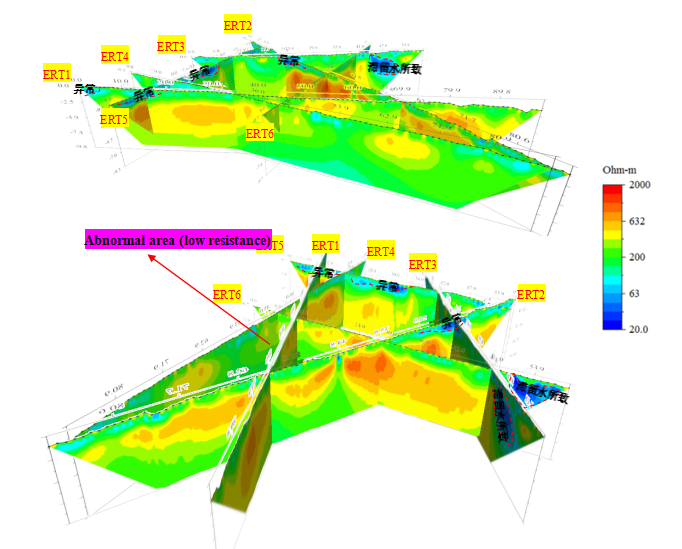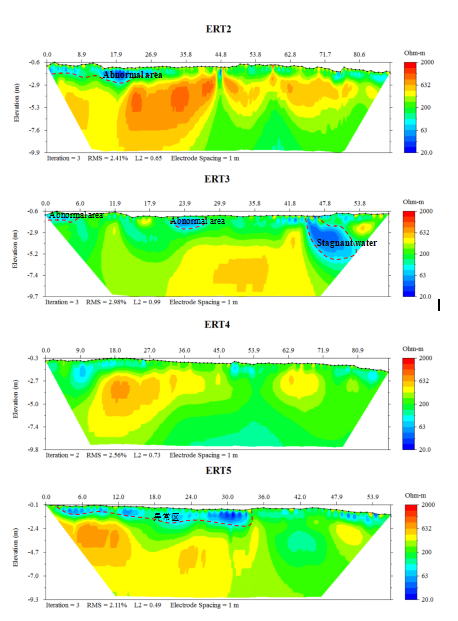
Purpose of the survey
We used Electrical Resistivity Tomography and Electromagnetic Method (EM) for the project survey. The purpose of this investigation is for geophysical surveys on the field area to detect the landfill distribution range, the investigation area is about 8000m2, the scope of the survey is shown in the blue area in Figure 1-1 below.
Project Status
The purpose of the investigation using the electrical resistivity method and electromagnetic method in geophysical exploration technology is:
To investigate the distribution and depth of the landfill.
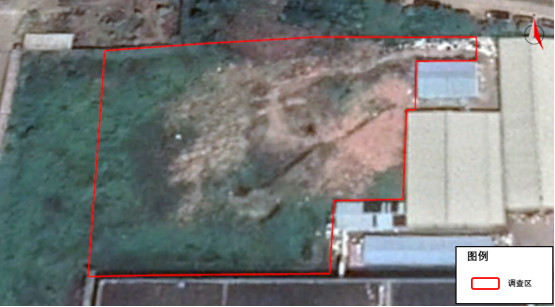
2.1 Resistivity Principle
The resistivity method is a geophysical method based on the difference in dielectric resistivity. The detection principle of the DC resistance method is to establish an artificial electric field by using a direct current to pass a pair of current poles A and B into the ground. By the difference in conductivity between the interlayer media, another potential pair M, N can be used to measure the potential difference between the electric field between M and N, thereby obtaining the apparent resistivity of the formation and estimating the conductivity distribution of underground formation.
Advantage
1.Deep depth, small terrain effect
2.Graphical representation of underground structures
3.Can be applied to well investigation
4.2D, 3D, 4D analysis
5.More specific quantitative indicators
6.Resistivity 20% or more difference with high resolution
7.Can be combined with other electrical surveys
Disadvantage
1.Have a certain in-line or lateral interference effect
2.If the background value is too similar to the target resistivity, the identification is difficult.

Figure 2-1 Resistivity principle

Figure 2-2 Resistivity survey
2.2 EM principle
The main method of induction electromagnetic method (EM) is frequency domain electromagnetic method (FDEM), which generates an induced magnetic field in the formation through the instantaneous current of the coil, and calculates the apparent conductivity of the material by recording the phase difference of the secondary magnetic field. In a fixed case, the two-dimensional tangent plane distribution of the conductivity of the material at a specific depth can be delineated.
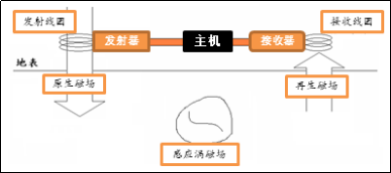
Figure 2-3 EM principle
It is often presented in the form of a cut plane equivalent image or a single point measurement, depicting the difference in surface electrical distribution, and the conductivity of the physical unit. (mS/m), representing different heights and values in different shades.
Advantage
1.Quick test
2.Single-player and GPS
3.Completely lossless
4.Suitable for large-scale screening
Disadvantage
1.Comprehensive conductivity measurement
2.Measurement depth is limited by frequency
3.Urban measurement is susceptible to interference
Unable to identify specific types of pollutants
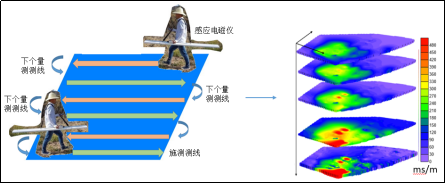
Figure 2-4 EM survey
2.3 Survey
Use the electromagnetic method to find out the contaminated area in the site, and then use resistivity method to layout the line and select the location.
To use Wenner-Schlumberger Array of resistivity method for the detection. Wenner array has better resolution for horizontal layered structures. Schlumberger array has relatively sensitive characteristics for vertical structure detection. Combining Wenner and Schlumberger array to have the good analytical data for the area. The survey distance between the electrodes is 1 meter, the resolution is about 1 meter. 6 ERT survey lines are arranged in the survey area.
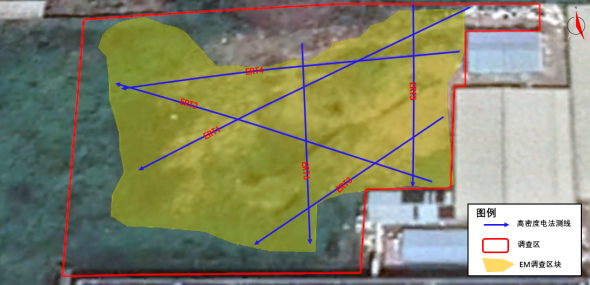
Figure 2-5 ERT line
Chart 2-4 Main equipment
No. | Equipment | Model | Quantity |
1 | GD series Electrical resistivity meter (ERT) | GD20 | 1set |
2 | GEM-2 EM | GEM-2 | 1set |
(1)The main equipment is GD-20 ERT system
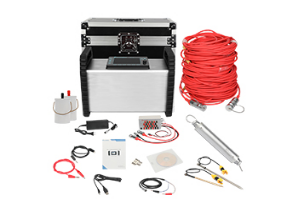
GD-20 series D.C geo-electrical system is a world-leading multi-functional direct current (D.C) method instrument, developed from the latest digital and analog circuitry technology. It is capable of performing electrical resistivity tomography (ERT), self-potential (SP) and induced polarization (IP) measurements. Apart from conventional electrical soundings, it also supports cross-sectional profiling with 2D or 3D ERT arrays. This system is not only capable of conventional surface surveys, but also the geo-electrical measurements in borehole logging, coal mining tunnels, marine and submarine surveys. It is even equipped with online real-time field monitoring mode, enabling our clients to perform unattended and automated surveys remotely for long durations.
(2)GEM-2 EM equipment
Equipment is light, high sensitivity, simple operation, can be applied to soil survey, shallow geological survey.
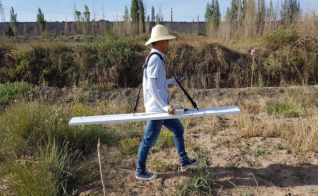
Figure 2-8 GEM-2 EM equipment
3.1 EM result
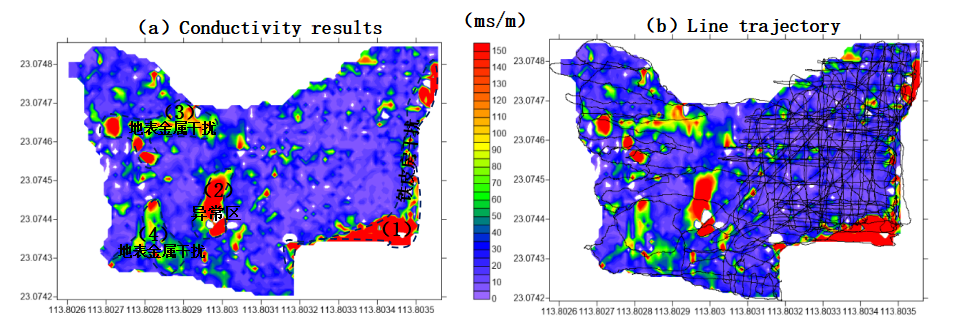
Figure 3-1 conductivity result(a)result( b)trajectory
Conductivity result of EM survey display in the figure 3-1, red color represents high conductivity (low resistivity), blue-violet color represents the low conductivity range. In the conductivity distribution of the survey area, there are 4 high conductivity area (1)、(2)、(3)、(4), the conductivity is more than 100 mS/m. In other area, the conductivity is less than 50mS/m, some are less than 10mS/m.

Figure 3-2 Conductivity projection drawing
In Figure 3-2, we found that the abnormal location is in the center of the area. Because the depth of electromagnetic detection is affected by the formation material, and the depth is limited. We used resistivity method to verify the vertical actual depth and the characteristics of the buried objects
3.2 ERT result
Combining on-site hand drill data and on-site ERT detection results, speculate that the abnormal characteristics of the landfill resistivity is less than 60 Ohm-m
